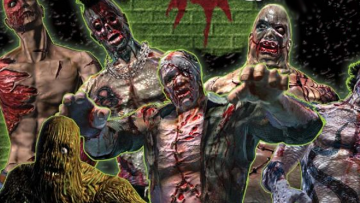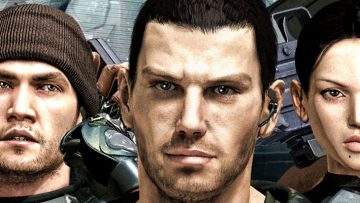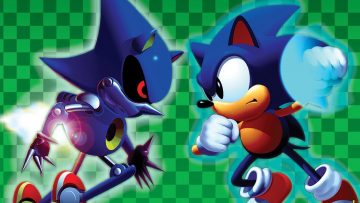
Dreamcast Launch Info
It appears that Sega is going all out to make the Dreamcast number 1 in the US. Both are told in Dave Smith’s view. First we’ll start with marketing:
Today, in a presentation delivered at a conference held by Computech Media, Sega Vice President for Marketing Peter Moore discussed the marketing of the Dreamcast in considerable detail. The promotions, the ads, the goals, the weird marketing-guy buzzwords, they were all there. What follows is my attempt to recount and sum up what he had to say in general. Specifics about the upcoming ads can be found in another article.
A major part of the plan will be to rehabilitate Sega’s brand reputation and reposition them as a front-runner in the games industry, on the same level as Sony or Nintendo. This involves appealing not only to the consumer, but also hardware manufacturers, developers, publishers, and retailers. The key, though, is selling Sega to the consumer. They seem to think they have the enthusiast market locked up, which perhaps isn’t a bad guess, considering the amount of press they’ve been getting for free for the last year. Most of the upcoming marketing campaign will be aimed at a broader youth audience. Sega is to be positioned as the “Xtreme gaming company,” “defiant,” “unexpected,” “fearless,” “irreverent,” “passionate,” and “independent.”
To accomplish that goal, Sega will employ a combination of direct and indirect means. Direct consists of the upcoming Imagine-published Dreamcast magazine and the sega.com website. Indirect is and will be the interesting part. The first steps of the indirect campaign are the Pepsi Hot Topics ads running in theatres right now and the Hollywood Video rental promotion (with accompanying PR nuttiness on midnight of the launch). It will really kick in come September, though. Sega will sponsor the 1999 MTV Video Music Awards (conveniently scheduled on 9.9.99), described by Moore as the “Super Bowl of Generation X” That’s when the majority of the Dreamcast TV spots will debut. There will also be big ridiculous parties on the launch day (I wonder, will they invite us?) and something called the Mobile Assault Tour; we’re low on details about that one (giant DC mobile shows off games and stuff in over 40 states), but check out the wicked 3D render of the giant Sega truck.
Sega certainly has some ambitious plans put together. Whether they’ll work is somebody else’s guess (I’ll never understand marketing). Now that we know what’s coming, though, it’ll certainly be interesting to watch it all unfold.
Now to the ad campaign info:
At the Computech Media conference mentioned in an earlier article, Sega VP for Marketing Peter Moore described Sega’s ad campaign through the end of the year in detail. We here at SegaNet and Gamer’s Republic have no earthly idea why Sega would release all this information in that particular place at once, but far be it from us to criticize their efforts to shoot themselves in both feet. Onward.
The Dreamcast ad campaign, masterminded by agency Foote, Cone, and Belding, has been divided into five stages. Each has a different particular purpose, although the overarching goal will be to promote the Dreamcast’s “living,” “thinking” qualities to the target youth audience. You’ve already seen a couple of the stages. The first was the “Buzz” stage. This was the character ads with Sonic and Taka in the trade pubs like MCV, Game Week, and Games Business, and Sega’s display of the system at E3. The idea here was to generate some word of mouth and confidence in Sega within the games industry.
Then came the oft-disparaged “Cryptic” phase, with the print ads with the spiral in the brains and eyes and things popping up here and there in mainstream game mags and generally causing people to say “What the hell is this?” The idea here, aside from causing people to say “What the hell is this?” was to show the DC logo popping up in odd places and “subliminally encode” (go fig) the 9.9.99 release date and the sega.com URL.
Right now we’re in the middle of the “Tease” phase, with more incomprehensible “It’s Thinking” print ads and those obnoxious “REM,” “Claustrophobia,” and “Bald Guy” ads on television. The spots were produced by an outfit called Imaginary Forces, who have their own web-page at www.imaginaryforces.com. Back to the ads, they’re evidently aimed at a 12-24 age demographic. No mention was made of their incidental appeal to the homeless insane of all ages.
In the near future lies the “Launch” phase, which is just beginning right now, with a four-page, eight-sided insert pamphlet in major game mags. I’m looking at one right now, in the issue of Gamer’s Republic that just came back from the presses. It’s a nicely-done little affair that introduces the system and many of the games that are coming at launch and shortly thereafter. It’s worth noting that regardless of what Acclaim has to say, Sega thinks WWF Attitude is coming to the DC. The meat of the “Launch” phase, however, will begin to hit on August 9, when the “Apocalypse” television spot will begin to air. This will show the console on TV for the first time. We got some vague rumblings out of Sega about this spot at the Hollywood Video affair. Now, here are the full details: it’s fifty-four seconds of special effects and live action and six seconds of computer animation, filmed in Vancouver and directed by Irishman John Moore. It is described (this is a quote; I can’t make this kind of stuff up on my own) as an “epic, action spot” that “makes [a] statement about [a] revolutionary product.” It will air in target-audience programming on the following channels: MTV, Fox, the WB, UPN, USA, ESPN, ZDTV, The Box, and of course, the most powerful vector for reaching the young male audience these days, the World Wrestling Federation. There will also be a ninety-second spot, presumably an extended version of the same “Apocalypse” spot, airing during the MTV Video Music Awards on 9.9.99.
After the launch, the campaign enters the “Sustaining” phase, where Sega seeks to maintain and build on the core audience they’ve hopefully reached with the launch blitz. It’s at this point where the print and TV campaigns will become more diverse and specific, attempting to reach a broader market and push specific titles. The first wave will consist of more “It’s Thinking” ads devoted to Sonic Adventure, House of the Dead 2, NFL 2000, and Ready 2 Rumble. These will appear in the usual suspects as far as game magazines go, as well as a number of publications devoted to other markets: Alternative Press (the comicbook publisher, or am I just confused?), Blaze, Raygun, Rolling Stone, Spin, The Source, Vibe, Sports Illustrated, Big Brother, Snowboarder, Thrasher, and Marvel Comics. In November, the campaign will broaden to include later titles like Virtua Fighter 3, Sega Bass Fishing, and NBA 2000, and appear in more publications: ESPN magazine, Source Sports, URB, XXL, and DC Comics.
There will also be five new half-minute TV spots featuring animation by Pacific Data Images, the company responsible for the animation in the film “Antz.” Evidently they’ll use the Dreamcast to create all the computer animation in the ads. They’ll be introduced during the Video Music Awards along with the lengthier “Apocalypse” ad; afterward, they’ll appear on the same array of programming as the as the earlier “Apocalypse” spot. This part of the campaign, called “In The Box,” will feature past and present stars of the NFL and NBA, as well as famous Sega characters. Here are the five ads:
“Opening Day” will be the first of the spots. It will use Dreamcast-created animation to display a varied cast of Sega characters interacting with each other and also Brian Grant of the Portland Trailblazers.
“Sumo” will focus on NBA 2000. An animated version of the Nets’ Keith van Horn will seek b-ball tips from Virtua Fighter’s Taka (hence the title). Meanwhile, in real life, Penny Hardaway, Juwan Howard, and Brian Grant will take each other on at NBA 2K.
“Bad Old Days,” despite its primarily human cast (there will be ten videogame characters, but the humans will be at the forefront) will be entirely animated. It features NFL 2000, and will star one of my favorite NFL quarterbacks, Jim McMahon of the Chicago Bears. You know, the guy with the headband and the shades, back when they massacred the Patriots? First Super Bowl I ever saw. Man, they were cool, him and Refrigerator Perry. Anyway, he’ll be giving some pointers to ROY wide receiver Randy Moss of the Vikings.
“Daydream” will be devoted to Sonic Adventure. Like “Bad Old Days,” this one will also consist of nothing but animation. My home-town hero Gary Payton (good choice, but Detlef Schrempf is much more photogenic) will party with Taka (what, are sumo wrestlers popular with the kids these days?) and Sonic will deejay at a club with over forty Sega characters in attendance. Should be fun spotting all the old favorites (will Vectorman be there? The Streets of Rage crew? Ecco? Me, I’m hoping for Alex Kidd).
Finally, “Drive In,” featuring Soul Calibur (yes, that’s a “u” there, Sega), will combine animation and live action. Oddly, the one human in it, Jamal Anderson of the Atlanta Falcons, will be animated, in the company of 20 presumably-animated characters (the cast of Soul Calibur, perhaps?). I have mixed feelings here, aside from the immediate oddness of using a ballplayer to sell a medieval-fantasy fighting game. On the one hand, I’m glad Sega knows which third-party title to push the living daylights out of. On the other, the thought of humans in Soul Calibur outfits (Ivy? Ewwww…) makes my skin crawl.
In conclusion, Sega threw out some assorted other announcements and bold predictions. The Video Music Awards, where much of Sega’s advertising will obviously be concentrated, will be simulcast at major retail locations (question: who will be hanging out at the game shop that late at night?). There will be some sort of sweepstakes in conjunction with MTV (no surprise), as well as other promotions and events located at major retailers nationwide. As a result of all this hype, Sega claims that they’ll sell 200,000 consoles through the launch weekend, and a cool million by the end of the year. That first one doesn’t sound too hard, considering the pre-order numbers that have been thrown around early on. The test will be to see if Sega can make the second goal. We wish them luck.
This post was originally written for TSSZ News.





![Private: [ID: C4mhZrvK854] Youtube Automatic](https://lastminutecontinue.com/wp-content/uploads/2025/03/private-id-c4mhzrvk854-youtube-a-360x203.jpg)
